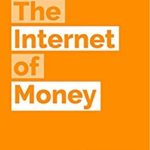Category Archives: blockchain
bitcoin-segwit2x – By Jeff John Roberts
(Important update: The leaders of the SegWit2X faction announced on Wednesday, November 8 they would suspend their plan to split bitcoin in mid-November.)
Bitcoin has faced turmoil in the past but nothing like this. In two weeks, a massive fight taking place among bitcoin insiders could produce a ruinous schism—undermining the integrity of digital currency and threatening its sky-highvalue.Continue reading
Nature of a Digital Coin? By Adam Davidson @ new yorker
What Is the Nature of a Digital Coin? Paris Hilton Might Know, but the S.E.C. Doesn’t
his week, the Securities and Exchange Commission made an odd, veiled threat, in the form of a short notice on its Web site, “Statement on Potentially Unlawful Promotion of Initial Coin Offerings and Other Investments by Celebrities and Others.” The commission didn’t use any names, but those in the know had little doubt: its warning was meant for Paris Hilton.Continue reading
The missing blockchain category – by Chris Huls
The future of payments. The end of all trusted intermediaries. A new world currency? The holy grail for … everything? Blockchain technology is booming and has been named as the most revolutionary technology since the Internet. The hype started in 2015, but is still continuing. Meaning the added value is difficult to commercialize, but also that the potential might reach beyond our dreams. This 3-year hype delivered us tens of usable blockchain platforms, hundreds of use cases and thousands of startups and corporates diving into the technology. Interestingly, as no real blockchain application is yet in production, except of course cryptocurrencies like Bitcoin. The question is how the future will look like in which we have many sustainable blockchain applications. In my opinion we’ve done a great deal, but one major category of blockchain networks is missing.Continue reading
UK National risk assessment of money laundering and terrorist financing
key money laundering and terrorist financing risks for the UK
“…Digital currencies
5.7 …The vulnerabilities identified in the 2015 NRA were largely around the anonymity and cross-border exposure of digital currencies, as well as the lack of interaction with the regulated sector…
5.8 The NCA has assessed the risk of digital currency use for money laundering to be relatively low; although NCA deems it likely that digital currencies are being used to launder low amounts at high volume, there is little evidence of them being used to launder large amounts of money.Continue reading
This Is the Reason Ethereum Exists – by Mike Orcutt
by Mike Orcutt
“(…) Bitcoin eventually took off, and soon people latched onto the idea that its blockchain could be used to do other things (…) But its design, intended specifically for a currency, limited the range of applications it could support, and Bitcoin aficionados started brainstorming new approaches.
It was from this primordial soup that Ethereum emerged.
In a 2013 white paper, Vitalik Buterin, then just 19, laid out his plan for a blockchain system that could also facilitate all sorts of “decentralized applications.”
The Internet of Money – Andreas M. Antonopoulos
“The Internet of Money – a collection of talks by Andreas M. Antonopoulos” (two volumes)
“Book overview, volume one : While many books explain the how of bitcoin, The Internet of Money delves into the why of bitcoin. Acclaimed information-security expert and author of Mastering Bitcoin, Andreas M. Antonopoulos examines and contextualizes the significance of bitcoin through a series of essays spanning the exhilarating maturation of this technology.Continue reading
CRYPTO20 – Crypto Index Fund
CRYPTO20 is a tokenized crypto index fund. Its token trades listed as C20.
The ethereum based, ERC20 compliant smart contract allows for liquidation process. Holders can redeem tokens for the Ether equivalent of the calculated NAV of the crypto assets held by the fund, less an 1% trading fee.
Marketcap or market-share debate aside, cap-ceiling at 10% may cause clearly distinct behaviour from what would be a no-cap portfolio distribution.
Segwit2x countdown (16/Out)
Counting Days Before the New Hard Fork.
Everything you need to know about SegWit2xSegWit2x
Andhra Pradesh, India, studies Blockchain Land Registry
“Visakhapatnam, India – 10 October of 2017 – Disputed land ownership is frequently a cause of conflict in the state of Andhra Pradesh. The current system, where land and property records are centralized in government databases, is inherently vulnerable to improper or unauthorised manipulation. (…) The government of Andhra Pradesh is exploring technologies like blockchain that can help solve these problems by decentralising data storage in such a way that it becomes difficult to manipulate without both having the proper authority, and following proper protocols. (…) Henrik Hjelte, CEO of ChromaWay, presented this partnership at the Blockchain Business Conference in Visakhapatnam, India. Continue reading
Litecoin peer-to-peer payments
Litecoin proposes to complement Bitcoin as a cheaper and faster payment method. Its open source global network allows descentralized transactions handled by blockchain.
Check Litecoin source, library, and other downloads on GitHub
IOTA White Paper
IOTA is a distributed ledger that rellies on spread validation of transactions instead of blocks. Instead of having miners confirming blocks of transactions, each participant issuing a transaction must approve 2 past transactions. Thus consensus is reached by destributed, active users. This data structure, based on Directed Acyclic Graph forms the ledger dubbed “Tangle”. As described in detail in Serguei Popov’s white paper.Continue reading
Ripple (XRP)
Ripple is a global payments network, RippleNet, based on Ripple Transaction Protocol. XRP is the digital asset intended to be used as a cross-currency liquidity utility.
RippleNet proposes a distributed financial network for real-time messaging, clearing and settlement. Continue reading
Whitepaper Database
Maybe selfproclaimed “The World’s Largest Database of Cryptocurrency Whitepapers” is somewhat exaggerated, but no doubt a great go-to whitepaper source.
Bitcoin’s Academic Pedigree – by Narayanan & Clark
The concept of cryptocurrencies is built from forgotten ideas in research literature.
Arvind Narayanan and Jeremy Clark
“…not to diminish Nakamoto’s achievement but to point out that he stood on the shoulders of giants. Indeed, by tracing the origins of the ideas in bitcoin, we can zero in on Nakamoto’s true leap of insight—the specific, complex way in which the underlying components are put together. This helps explain why bitcoin took so long to be invented. Readers already familiar with how bitcoin works may gain a deeper understanding from this historical presentation.(…) Bitcoin’s intellectual history also serves as a case study demonstrating the relationships among academia, outside researchers, and practitioners, and offers lessons on how these groups can benefit from one another.
Elliptic Curve Cryptography – By Jimmy Song
By Jimmy Song, Principal Blockchain Architect
“…Finite fields are one thing and elliptic curves another. We can combine them by defining an elliptic curve over a finite field. All the equations for an elliptic curve work over a finite field. By “work”, we mean that we can do the same addition, subtraction, multiplication and division as defined in a particular finite field and all the equations stay true. If this sounds confusing, it is. Abstract algebra is abstract!Continue reading
Introduction to EOS by trogdor @ steemit
trogdor (63) in eos
EOS is a consensus blockchain operating system that provides databases, account permissions, scheduling, authentication, and internet-application communication to massively improve the efficiency of smart business development that uses parallelization to make possible blockchain scalability to millions of users and millions of transactions per second.
(…)
In order to introduce EOS, we first need to understand the current state of blockchain tech, and how we got here. (…)
In 2013, the decentralized exchange Bitshares was built, and in 2014 Bitshares was launched. It used delegated proof-of-stake giving 3 second confirmation times with very predictable, reliable block production. The first version of Bitshares was built off of some of the same ideas as Bitcoin and shared some technology, but still didn’t meet the performance requirements of an exchange. In 2015 Graphene was created, and Bitshares was completely rewritten. This was able to achieve 100,000 transaction per second on a single machine, and decentralized global stress testing achieved 18,000 transactions per second on a distributed network. (…)
If you look at the blockchain industry, everyone wants to build smart businesses, decentralized organizations, etc…, and in the process developers built decentralized computers from the ground up which can run their smart apps. In this process, all app developers have to solve many of the same problems: account systems, recovery processes, multi-sig, manage challenges, and what they’re missing is the operating system, (…). EOS aims to provide this operating system to provide all the core functions to app developers and allow them to focus on just the business logic that makes their apps unique.
EOS provides an operating system and a decentralized computer to radically improve the efficiency of smart business development.
What do DAPPs require?
…”
Tezos: A new digital commonwealth
Tezos a generic and self-amending crypto-ledger. Tezos can instantiate any blockchain based ledger. The operations of a regular blockchain are implemented as a purely functional module abstracted into a shell responsible for network operations, and allows creating governance rules for stakeholders to approve of protocol upgrades that are then automatically deployed on the network.
EOS White Paper
The EOS.IO software introduces a new blockchain architecture designed to enable vertical and horizontal scaling of decentralized applications. This is achieved by creating an operating system-like construct upon which applications can be built. The software provides accounts, authentication, databases, asynchronous communication and the scheduling of applications across hundreds of CPU cores or clusters. The resulting technology is a blockchain architecture that scales to millions of transactions per second, eliminates user fees, and allows for quick and easy deployment of decentralized applications.Continue reading

